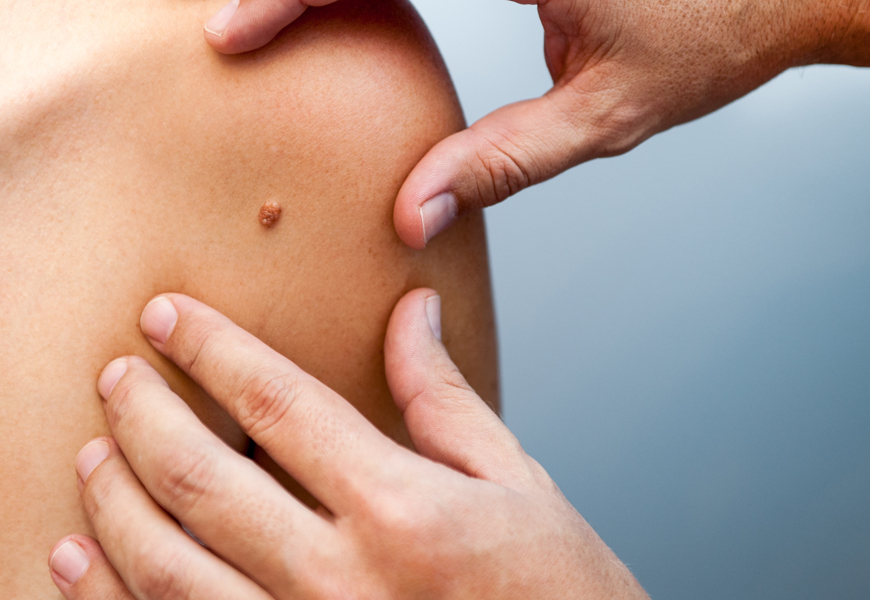When was the last time you truly took stock of the freckles and moles on your body? Would you know if they’d changed, morphed into something more than simply an aesthetic marking on your skin? According to the Canadian Cancer Society, approximately 6,800 Canadians, half of whom are men were diagnosed with melanoma or as it’s commonly referred to: skin cancer, last year. So with summer’s sun fading, now is the perfect time to get naked, stand in front of the mirror and take a closer look at your spots.
Understanding melanoma
Cancer of the skin starts with melanocytes, the cells that create melanin—the pigment that determines our eye and hair colour. When your skin is exposed to the sun’s UV light, these cells get to work and produce more melanin. Too much sun exposure and your melanin production goes into overtime. “Like smoking is a key factor in lung cancer, the sun is a major contributor to all skin cancers,” explains Dr. Nowell Solish, M.D., a Cosmetic Dermatologist and founder of his eponymous clinic in Toronto. And while skin cancer can show up in multiple forms it frequently develops into moles.
What you need to look for
Our bodies constantly change and that includes our skin. “Everything changes as you age, so your moles will grow with you,” affirms Dr. Solish. “Your first sign that something’s not right, however, is if you notice a mole growing quickly and/or changing in size, shape or colour.” Atypical moles are usually multiple shades of brown or red and can feature an irregular shape and/or border. Another clue that your mole may be more than what appears on the surface is spontaneous bleeding, on more than one occasion.
Where to look
Atypical moles are most commonly found on your back, buttocks, chest and scalp and they’re not restricted to skin parts that only see the sun. “If you’re not sure what you’re looking at or if your mole is changing, take a picture,” advises Dr. Solish. “Then, upload it onto your computer screen so that you can monitor its growth.” If you think you’re seeing something suspicious, make an appointment with your family doctor. “A sample biopsy can be performed in an hour.”
When to look
Get into the habit of checking your body once a month. “If you’re not actively looking, you may not notice when something changes,” says Dr. Solish. “It’s like driving home along the same road every day and not noticing when the house on the corner puts a For Sale sign on it’s lawn. But if you’re looking to move, you’ll see it.”
When to act
Now. Be it looking for atypical moles or applying sunscreen on a daily basis, 365 days a year. “The best prevention is to be diligent about your sun protection in general,” says Dr. Solish. “Wear sunscreen, avoid sun exposure between 10 am and 3 pm, cover up, wear a hat and sit in the shade, even in the winter time.”












